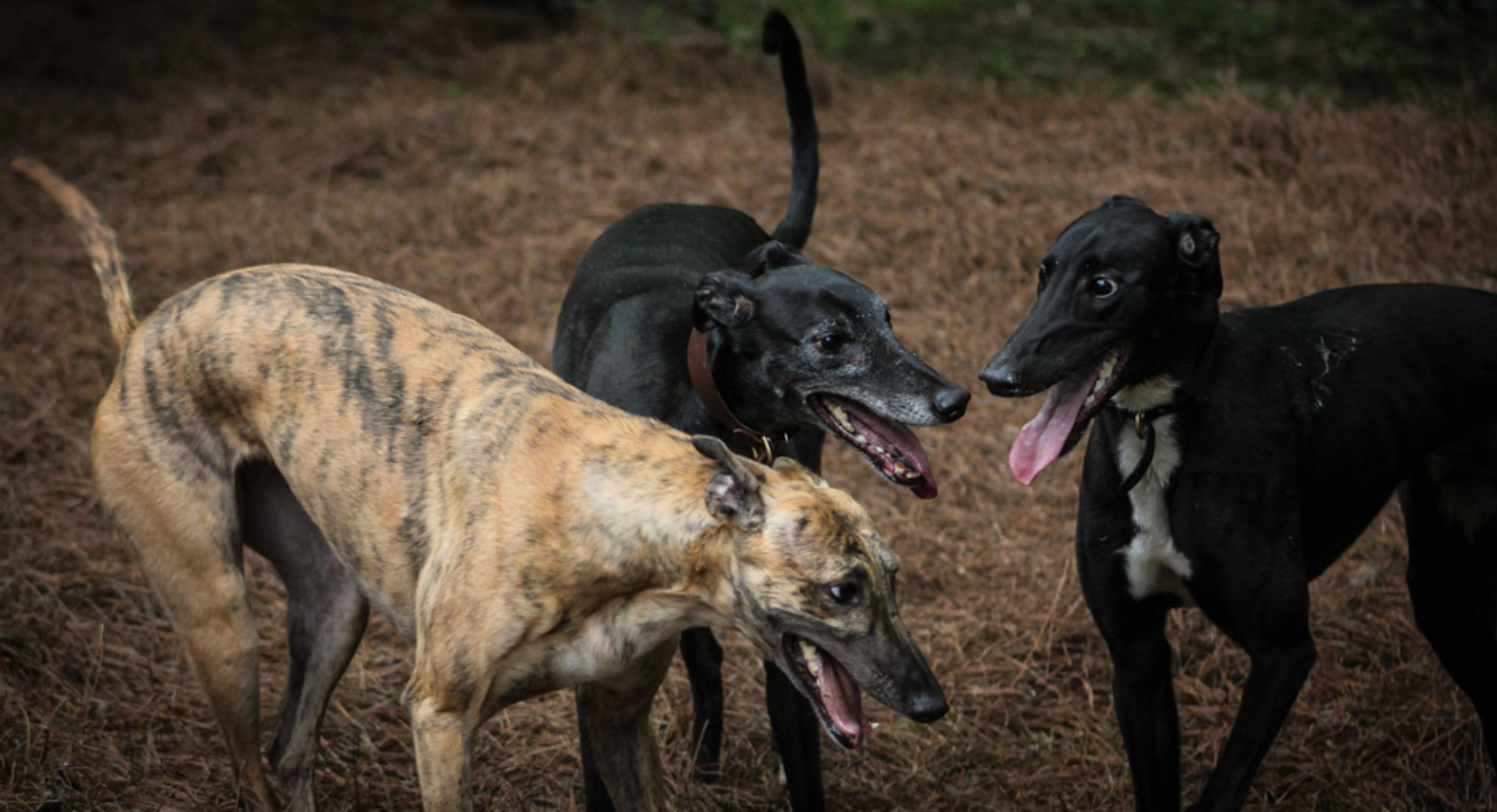Have you ever wondered what makes a Greyhound happy? Or even if your Greyhound experiences any emotion like we do?
I have. Jethro recently had a spontaneous injury to his back. He was paralyzed from the pelvis down. We were lucky and he was able to have surgery to fix the issue. He is getting better but he still has a long road ahead of him.
Jethro is a high-strung Greyhound that does not like to be still; he has “extra personality.” He has been miserable while he has been sick. He whines and seems listless. He is only happy when he is eating, outside, cuddled up to Clint or me, or playing nose work. We have ben playing a lot of games and that has made this experience better for the both of us. Jethro may be the best trained of the bunch at this moment!

This experience made me think about the emotions dogs may feel. I wondered how Jethro’s brain was processing his condition. This experience made me want to know more about dog cognition.
Dog cognition is an up-and-coming field. There are several centers around the U.S. studying dogs. We have learned that dogs are special compared to other animals. Dogs are able to learn our cues even better than chimps and other non-human primates.
I was shocked that a dog could understand what I want him to do more quickly than a non-human primate. A study published in Interactions Studies in 2009 looked at New Guinea Signing Dog (NGSD), along with four breeds of dogs registered with kennel clubs—the the Siberian Huskie, the German Shepherd Dog (GSD), the Toy Poodle, and the Basenji (Wobber, Hare, Koler-Matznick, Wrangham, & Tomasello, 2009). The researchers tested three types of cues on these dogs—they set out two bowls of food, the first cue was pointing and turning toward one bowl, the second was handling a block and then setting it in front of a bowl, and the third was covering the dogs’ eyes and sitting the block in front of one bowl (Wobber et al., 2009). In experiments with the NGSG and the kennel club dogs both reacted to these cues (Wobber et al., 2009). This is incredibly interesting, as wolves do not do this (Hare, Brown, Williamson, & Tomasello, 2002; Virányi et al., 2008). Furthermore, the NGSD is a breed that has had very little human involvement in their breeding and they still picked up on these cues similarly to the pure breed kennel dogs (Wobber et al., 2009).
This does not prove that dogs experience emotions as we do, but it does show that dogs are very in tune with humans. They are paying attention to us and respond accordingly. For instance, when I get my camera case out, my Greyhounds know we are about to go run. Dogs pay attention to what we do.
There continues to be a lot of research focused on the dog’s cognitive system. Hopefully someone will eventually be able to answer our question about the emotions our Greyhounds feel or don’t feel.
For now we have to do our best to not anthropomorphize our Greyhounds. We understand that they are in tune with us but do not necessarily feel what we perceive that they feel. We have to remember they are dogs and sometimes what makes them happiest is a nice run in a field, a good beef neck bone, an ear rub, or a nice game of nose- work!

Hare, B., Brown, M., Williamson, C., & Tomasello, M. (2002). The domestication of social cognition in dogs. Science, 298(5598), 1634-1636. doi:10.1126/science.1072702
Virányi, Z., Gácsi, M., Kubinyi, E., Topál, J., Belényi, B., Ujfalussy, D., & Miklósi, A. (2008). Comprehension of human pointing gestures in young human-reared wolves (Canis lupus) and dogs (Canis familiaris). Anim Cogn, 11(3), 373-387. doi:10.1007/s10071-007-0127-y
Wobber, V., Hare, B., Koler-Matznick, J., Wrangham, R., & Tomasello, M. (2009). Breed differences in domestic dogs’(Canis familiaris) comprehension of human communicative signals (Vol. 10:2, pp. 206-224). Interaction Studies: John Benjamins Publishing Company

